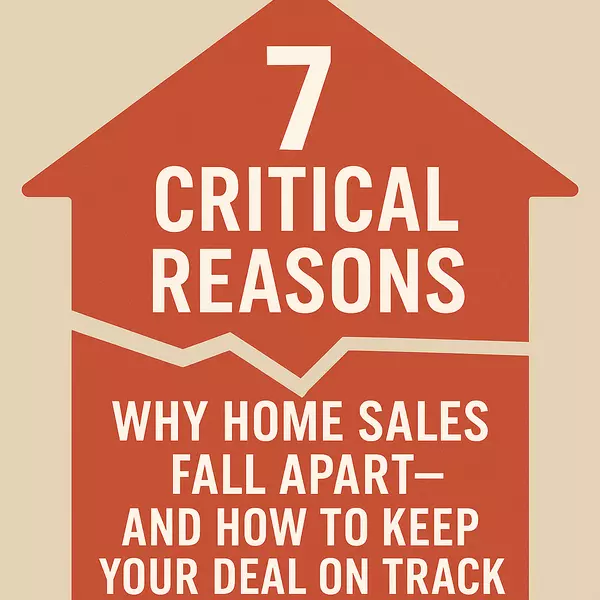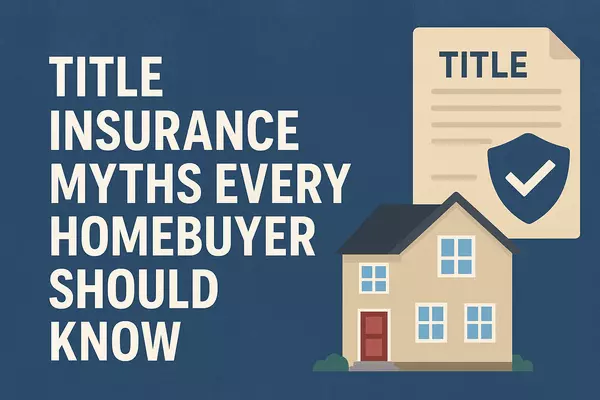Understanding the Difference Between Second Homes and Investment Properties

In the real estate world, the distinction between a second home and an investment property is crucial for all property owners. Clarifying these differences is essential for navigating mortgage lenders' guidelines, IRS regulations, and Condo/Homeowners Association rules. Let's break down what you need to know.
Mortgage Lenders Focus on Risk Management
When it comes to mortgage lenders, they categorize residential properties into three types based on occupancy:
- Primary Residence
- Second Home
- Investment Property (Non-Owner Occupied)
Within the same mortgage program, interest rates differ for these categories. A Primary Residence mortgage typically has the lowest interest rate, followed by a Second Home, with Investment Property mortgages having the highest rates. This tiered structure reflects the varying risk levels for lenders.
Loan-to-Value Ratios
Lenders also set different maximum Loan-to-Value (LTV) ratios for each category. Primary Residences allow for the highest LTV, meaning lower down payments. Second Homes require higher down payments, and Investment Properties necessitate the highest down payments, further emphasizing the risk management approach of lenders.
Primary Residence Criteria
Primary Residences are typically defined by:
- Address on driver’s license and vehicle registration
- Utility usage
- Address on federal income tax returns
- Voter registration
The commonly cited "6 months and a day" rule for establishing primary residency is a myth. Occupancy is verified through valid documentation.
IRS: Taxation and Deductibility
The IRS has its own criteria for classifying Second Homes and Investment Properties, focusing on taxation and deductibility of costs. According to IRS Publication 936, a Second Home is considered a "qualified home" for tax purposes, even if it isn’t used by the owner during the year, as long as it isn’t rented out. Mortgage interest on a qualified Second Home is tax-deductible when itemizing deductions.
Rental and Tax Implications
If a Second Home is rented out part of the year, the owner must use it personally for a certain period to maintain its status for mortgage interest deduction. Otherwise, it’s classified as a rental property, requiring different tax treatment as detailed in IRS Publication 527.
Condo and Homeowners Associations: Preserving Property Values
Condominium and Homeowners Associations (HOAs) have rules to maintain property values by controlling non-owner occupancies. These rules impact the classification of properties and can affect financing options. Associations often limit the number of Investment Properties in a community, as high rates of short-term rentals can lead to financing difficulties for other owners.
Governing Documents
Always review your Association's Governing Documents for restrictions related to owner, guest, and tenant occupancies. Non-immediate family members, friends, and guests are typically not considered owner-occupants if the property owner is not present.
Fannie Mae Guidelines for Second Homes
Using Fannie Mae’s guidelines as a benchmark for conventional mortgages, a Second Home must:
- Be a reasonable distance from the Primary Residence
- Be occupied by the borrower for part of the year
- Be a single-family home or individual condominium unit suitable for year-round occupancy
- Have the borrower in exclusive control over occupancy without third-party rental approvals
If these criteria aren’t met, the property defaults to Investment Property status, affecting interest rates and down payment requirements.
Florida Homestead Act: Occupancy and Benefits
Florida’s Homestead Act offers significant benefits for permanent residents, such as property tax exemptions. However, Second Homes and Investment Properties do not qualify for Homestead status. Owners renting their properties too frequently risk losing these benefits, as their properties could be deemed abandoned Homesteads.
Bottom Line
Understanding the distinctions between Primary Residences, Second Homes, and Investment Properties is crucial for all Florida property owners. These classifications impact mortgage rates, tax deductions, and compliance with HOA rules. Whether you’re buying or already own a property, knowing these rules will help you make informed decisions and maximize your benefits.
For personalized advice and to explore your options, contact a real estate professional or tax advisor today. Your understanding of these categories can significantly influence your real estate journey and financial outcomes.
Categories
- All Blogs 338
- 55+ Communities 9
- Boating Communities 9
- First Time Home Buyer 110
- Florida Lifestyle 67
- Foreclosures 2
- Fun Things to do in Lee County, Florida 37
- Golf Communities 23
- Home Buyer Tips 125
- Home Seller Tips 102
- Homeowner Tips 61
- Mortgage Tips 37
- Neighborhoods 62
- Schools 3
- Title & Escrow 2
- Title Insurance 4
Recent Posts










GET MORE INFORMATION

Billee Silva, PA, ABR SRS
Licensed Realtor | License ID: P3275278
Licensed Realtor License ID: P3275278
